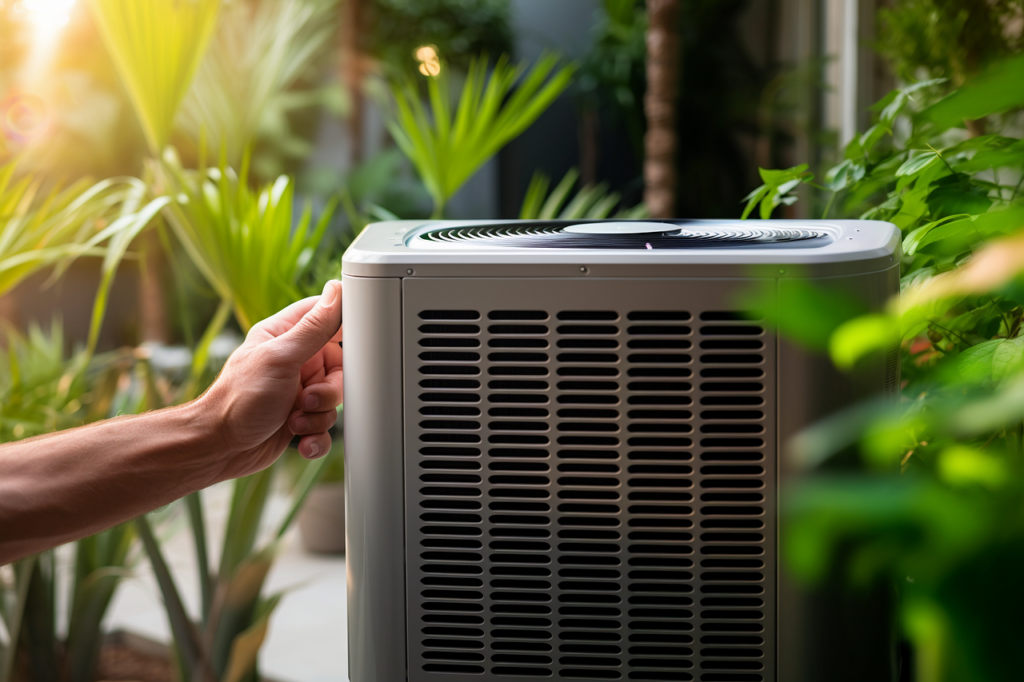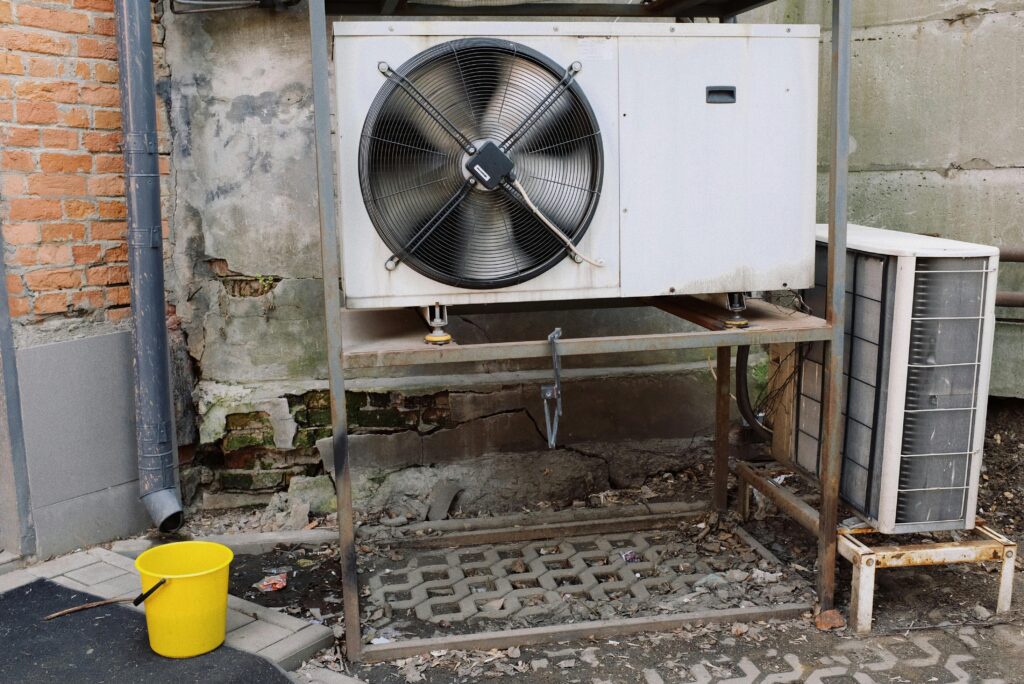In the realm of commercial spaces, maintaining a comfortable and conducive environment for occupants is paramount. A pivotal component of achieving this goal is the selection of an appropriate Heating, Ventilation, and Air Conditioning (HVAC) system. Choosing the right commercial HVAC system involves a careful consideration of various factors to ensure optimal performance, energy efficiency, and cost-effectiveness. This article delves into the key aspects to consider when making this critical decision.

Assessing Building Size and Layout
The first step in selecting a commercial HVAC system is to assess the size and layout of the building. The HVAC system must be adequately sized to meet the specific requirements of the space it is intended to serve. Undersized systems may struggle to maintain comfortable temperatures, leading to increased energy consumption and wear on the system. Conversely, oversized systems may cycle on and off frequently, resulting in inefficiencies and unnecessary wear and tear.
Consider the square footage, ceiling height, and layout of the building to determine the appropriate heating and cooling capacities needed. Engaging a professional HVAC engineer to conduct a thorough assessment is advisable, as they can perform load calculations to ensure accurate sizing.
Energy Efficiency and Environmental Impact
In today’s environmentally conscious landscape, energy efficiency is a critical consideration when selecting a commercial HVAC system. Opting for energy-efficient systems not only reduces operational costs but also minimizes the environmental impact of the building. For air conditioners and heat pumps, look for systems with high Seasonal Energy Efficiency Ratio (SEER) and Heating Seasonal Performance Factor (HSPF) ratings.
Additionally, explore eco-friendly refrigerants that have lower Global Warming Potential (GWP) compared to traditional refrigerants. Systems utilizing advanced technologies, such as variable-speed compressors and smart controls, contribute to greater energy efficiency by adjusting output based on real-time demand.
Type of HVAC System: Packaged or Split Systems
Commercial HVAC systems are broadly classified into packaged systems and split systems. The choice between the two depends on the specific needs and constraints of the commercial space.
- Packaged Systems: These units house all components, including the compressor, condenser, and evaporator, in a single cabinet. They are typically installed outside the building and are suitable for spaces with limited indoor space. Packaged systems are easier to install and maintain.
- Split Systems: Split systems, on the other hand, separate the components, with the condenser located outside and the evaporator inside. This configuration is ideal for buildings with more available indoor space. Split systems offer greater flexibility in terms of installation but may be more complex to set up.
Consider the available space and installation requirements when choosing between packaged and split systems.

Zoning Requirements and Building Usage
Commercial buildings often have diverse spaces with varying heating and cooling needs. Zoning allows for the customization of temperature control in different areas of the building, optimizing comfort and energy efficiency. Assess the building’s layout and usage to determine if a zoning system is necessary.
For example, areas with high occupancy, such as conference rooms or open workspaces, may require different temperature settings than storage rooms or server rooms. Implementing a zoning system enables precise control over individual areas, reducing energy consumption and improving occupant comfort.
Maintenance and Serviceability
The long-term success of a commercial HVAC system depends on its maintenance requirements and serviceability. Opt for systems that are easy to access and service, as this reduces downtime and maintenance costs. Regular maintenance and changing HVAC systems filer is crucial to ensuring the system operates efficiently and has a prolonged lifespan.
Consider systems with user-friendly interfaces and diagnostic features that facilitate troubleshooting and maintenance tasks. Additionally, choose HVAC systems from reputable manufacturers with a history of producing reliable and durable equipment. This ensures that replacement parts are readily available, and qualified technicians are familiar with the equipment.
Lifecycle Costs and Return on Investment (ROI)
While upfront costs are a significant consideration, evaluating the lifecycle costs and potential return on investment (ROI) is equally important. High-efficiency systems may have a higher initial cost but can result in substantial energy savings over the system’s lifespan. Conduct a thorough cost analysis that includes installation, maintenance, and operational expenses to determine the overall economic viability of each option.
Consider the payback period for investing in a more energy-efficient system. Energy rebates and incentives offered by governmental and environmental agencies can also offset initial costs, providing an added incentive to choose environmentally friendly and energy-efficient HVAC solutions.
Future Expansion and Scalability
The growth and expansion of a commercial enterprise often entail strategic modifications to the HVAC (Heating, Ventilation, and Air Conditioning) system. When considering the selection of an HVAC system, it is imperative to take into account its scalability and the ease with which it can accommodate future expansions. Opting for modular systems and those with flexible configurations is crucial, as they permit the seamless integration of additional components or upgrades. This adaptability ensures that the HVAC system can evolve and adjust to the changing needs of the building as the business expands.
One key element to keep in mind during the selection and design process is the 16x25x1 Furnace Filter. Incorporating this specific furnace filter size into the HVAC system is vital for effective air filtration and maintenance. Working closely with HVAC professionals and system designers is essential to create a system that not only meets the immediate heating and cooling requirements but also possesses the flexibility to evolve with the business.
By collaborating with experts in the field, businesses can develop a well-designed HVAC system that integrates the 16x25x1 Furnace Filter seamlessly. This proactive approach helps avoid the need for significant overhauls or replacements when expanding the commercial space, saving both time and resources. The inclusion of a reliable and appropriately sized furnace filter enhances the system’s overall efficiency, contributing to a healthy and comfortable indoor environment for the occupants.
Compliance with Industry Standards and Regulations
Adherence to industry standards and regulations is imperative to ensure the safety, efficiency, and environmental responsibility of the chosen HVAC system. Verify that the selected system complies with local building codes, environmental regulations, and energy efficiency standards. Non-compliance can lead to fines, legal issues, and operational disruptions.
Additionally, certifications from reputable organizations, such as ENERGY STAR, indicate that the HVAC system meets stringent efficiency and environmental criteria. Choosing certified products assures quality and compliance with industry standards.
Conclusion
Selecting the right commercial HVAC system is a multifaceted decision that requires careful consideration of various factors. From assessing the building size and layout to evaluating energy efficiency, zoning requirements, and compliance with regulations, each aspect plays a crucial role in determining the optimal HVAC solution. By prioritizing factors such as scalability, maintenance, and lifecycle costs, businesses can make informed decisions that contribute to a comfortable, energy-efficient, and sustainable commercial environment. Engaging with HVAC professionals and leveraging technological advancements will further enhance the selection process, ensuring a seamless integration of the HVAC system into the broader infrastructure of the commercial space.






